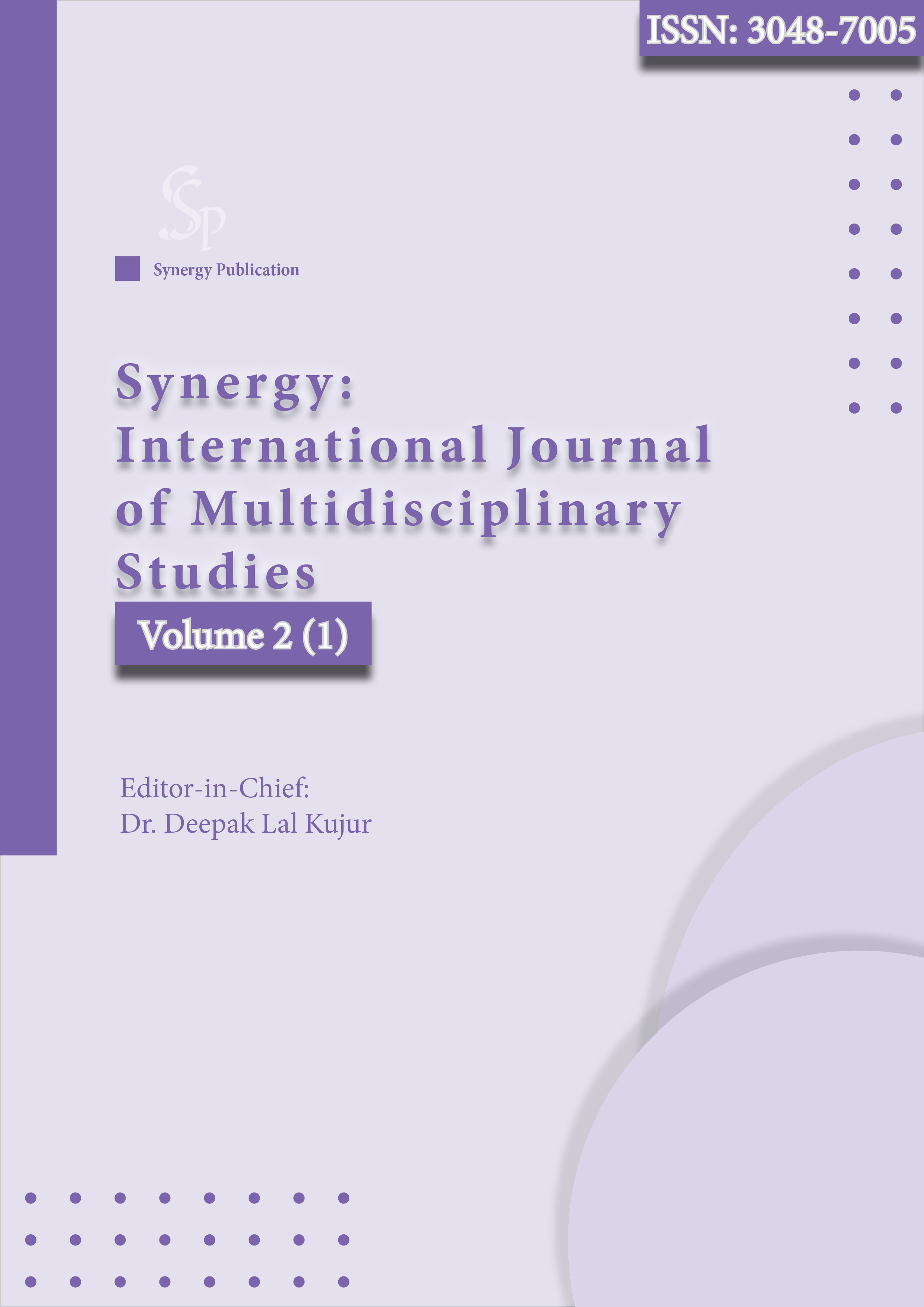Beyond Ad Hocism: Towards Rights based Refugee protection in India
DOI:
https://doi.org/10.63960/sijmds-2025-2168Keywords:
Forced migrations, Non-refoulement, Socio-economic Rights, Discrimination, Issues Securitization, RefugeesAbstract
India’s absence of a national refugee law entrenches discriminatory and securitised governance of displaced populations. Despite hosting over 200,000 refugees from Tibet, Sri Lanka, Afghanistan, and Myanmar, India relies on ad hoc policies under immigration statutes like the Foreigners Act (1946), creating hierarchies of protection. This paper critiques India’s “strategic ambiguity” through comparative case studies of three groups: state-supported Sri Lankan Tamils (Category I), UNHCR-recognised Afghans (Category II), and criminalised Rohingya Muslims (Category III). It reveals how geopolitical interests—not vulnerability—determine rights access, with Muslim refugees systematically excluded. Legal limbo denies refugees socio-economic entitlements: Rohingya in Delhi/Jammu lack documentation for schools, healthcare, and formal work, violating constitutional guarantees. Concurrently, securitisation frames refugees as security threats, justifying deportations (e.g., MHA’s 2017 Rohingya policy) and religious exclusion under the Citizenship Amendment Act (2019). The analysis employs securitisation theory (Buzan et al.) and “crimmigration” (Stumpf) to argue that India’s policy asymmetry enables state-sanctioned discrimination. Recommendations include enacting a rights-based refugee law enshrining non-refoulement, regional cooperation via SAARC, and learning from Mizoram’s local integration of Chin refugees. Without structural reform, India’s selective humanitarianism will continue violating international norms and marginalizing the most vulnerable.
Downloads
References
ActionAid Association & National Human Rights Commission. (2024, July). Refugees in India: A national survey of refugee communities’ access to education, healthcare and livelihoods. https://www.actionaidindia.org https://nhrc.nic.in/sites/default/files/Refugees_in_India.pdf
Bhattacharjee, S. (2008). India needs a refugee law. Economic and Political Weekly, 43(9). https://ssrn.com/abstract=1760460
Bøås, M. (2005). The liberian civil war: new war/old war? Global Society, 19(1), 73–88. https://doi.org/10.1080/1360082042000316059 DOI: https://doi.org/10.1080/1360082042000316059
Buzan, B., Wæver, O., & de Wilde, J. (1998). Security: A New Framework for Analysis. Lynne Rienner DOI: https://doi.org/10.1515/9781685853808
Chimni, B. S. (2003). Status of refugees in India: A strategic ambiguity. In R. Samaddar (Ed.), Refugees and the state: Practices of asylum and care in India, 1947–2000 (pp. 443–470). SAGE Publications.
Borah, D., & Das, B. (2024). India’s refugee policy: A critical analysis. Library Progress International, 44(3), 9877–9885. https://bpasjournals.com/library-science/index.php/journal/article/view/2198/1431
Durodola, T. S. (2025). When does a refugee stop being a ‘refugee’? The social construction of refugeehood after cessation. Journal of Refugee Studies. https://doi.org/10.1093/jrs/feaf047 DOI: https://doi.org/10.1093/jrs/feaf047
Human Rights Watch. (2020). World Report 2019. Retrieved July 24, 2025, from https://www.hrw.org/world-report/2019
International Rescue Committee. (2019, September 25). Missing persons: Refugees left out and left behind in the SDGs. https://migrationdataportal.org/resource/missing-persons-refugees-left-out-and-left-behind-sdgs.
Kaunert, C., & Khan, A. (2024). Securitization and counter-securitization of militancy in Pakistan after 9/11. Asian Political Science Review, 8(2), 68–83. https://doi.org/10.14456/apsr.2024.17
Koizumi, K., & Hoffstaedter, G. (Eds.). (2015). Urban Refugees: Challenges in Protection, Services and Policy (1st ed.). Routledge. https://doi.org/10.4324/9781315733258 DOI: https://doi.org/10.4324/9781315733258-1
Lal, R. (2019). The Principle of Non-Refoulement in International Law and its Applicability in Protection of Refugees in India. Research Journal of Humanities and Social Sciences, 10(2), 436. https://doi.org/10.5958/2321-5828.2019.00074.3 DOI: https://doi.org/10.5958/2321-5828.2019.00074.3
Ministry of Home Affairs. (2017, December 20). Unstarred question no. 534 to be answered on the 20th December, 2017 (Agrahayana 29, 1939 Saka). Rajya Sabha. Retrieved from https://www.mha.gov.in/MHA1/Par2017/pdfs/par2017-pdfs/rs-20122017/534.pdf
Mitra, R., & Şahin-Mencütek, Z. (2024). Bargaining (in)visibility: Rohingya refugees and the politics of visibility in India. Journal of Refugee Studies, 37(3), 716–733. https://doi.org/10.1093/jrs/feae049 DOI: https://doi.org/10.1093/jrs/feae049
Smyser W. R. (1985). Refugees: a never-ending story. Foreign affairs (Council on Foreign Relations), 64(1), 154–168. DOI: https://doi.org/10.2307/20042472
Stumpf, J. P. (2006). The crimmigration crisis: Immigrants, crime, and sovereign power. American University Law Review, 56, 367–419. https://ssrn.com/abstract=935547
Sudheer, N., & Banerjee, D. (2021). The Rohingya refugees: a conceptual framework of their psychosocial adversities, cultural idioms of distress and social suffering. Global mental health (Cambridge, England), 8, e46. https://doi.org/10.1017/gmh.2021.43 DOI: https://doi.org/10.1017/gmh.2021.43
Tavakolinia, M. (2019) Human Rights of Refugees: Indian Perspective. Journal of Emerging Technologies and Innovative Research, 6(5), 147-151. https://www.jetir.org/papers/JETIR1905E22.pdf
Tiwari, G. (2024). Promoting effective refugee protection in India: balancing national interests and international obligations. Athens Journal of Law, 10(2), 209–220. https://doi.org/10.30958/ajl.10-2-2 DOI: https://doi.org/10.30958/ajl.10-2-2
Tuitt, P. (1999). False images: The law’s construction of the refugee. Pluto Press.
UNHCR India. (2022). India country brief – Protection and access to services. https://www.unhcr.org/in
UNHCR. (2023a). India fact sheet. https://reporting.unhcr.org/india-factsheet-6918
UNHCR. (2023b). India fact sheet. https://reporting.unhcr.org/india-factsheet-6140
UNHCR (2019), Including Forced Displacement in the SDGs: A New Refugee Indicator, available at: https://www.unhcr.org/blogs/including-forced-displacement-in-the-sdgs-a-new-refugee-indicator/
Downloads
Published
How to Cite
Issue
Section
Categories
License
Copyright (c) 2025 Iram Sarver, Sarita Kumari

This work is licensed under a Creative Commons Attribution 4.0 International License.








